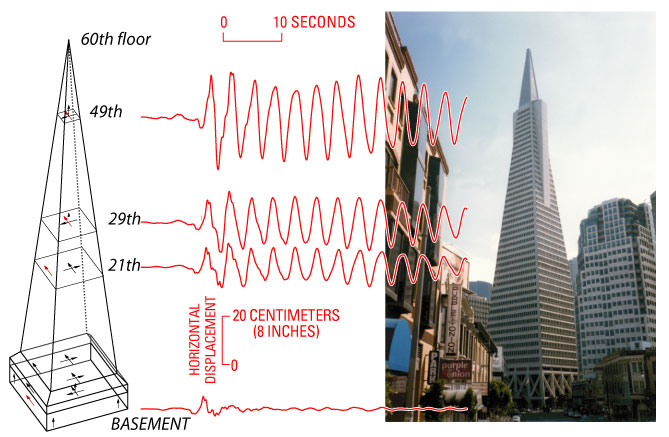| Buildings
are complex structures. They are made of multiple elements and components
that are stressed and interact with one another when shaken by an earthquake.
Buildings vary widely in size, geometry, structural system, construction
material, and foundation characteristics. These attributes influence how
a building performs when the ground shakes. The 1989 Loma Prieta earthquake
(magnitude 6.9) set San Francisco’s Transamerica Pyramid swaying
and rocking. An array of 22 sensors (small arrows) installed by the U.S.
Geological Survey in the steel-frame structure documented that the horizontal
displacement on the 49th floor of the building was five times the 1a inches
measured in the basement, as indicated by the recordings (red lines).
No significant twisting of the building was measured due to the symmetry
of the building about its vertical axis. Located 60 miles from the epicenter
of the quake and designed to withstand even larger shocks, the building
was undamaged. Earthquake records from buildings, such as those from the
Transamerica Pyramid, allow engineers to verify mathematical models used
to predict deformation of a structure from a given pattern of shaking
of its foundation. |
